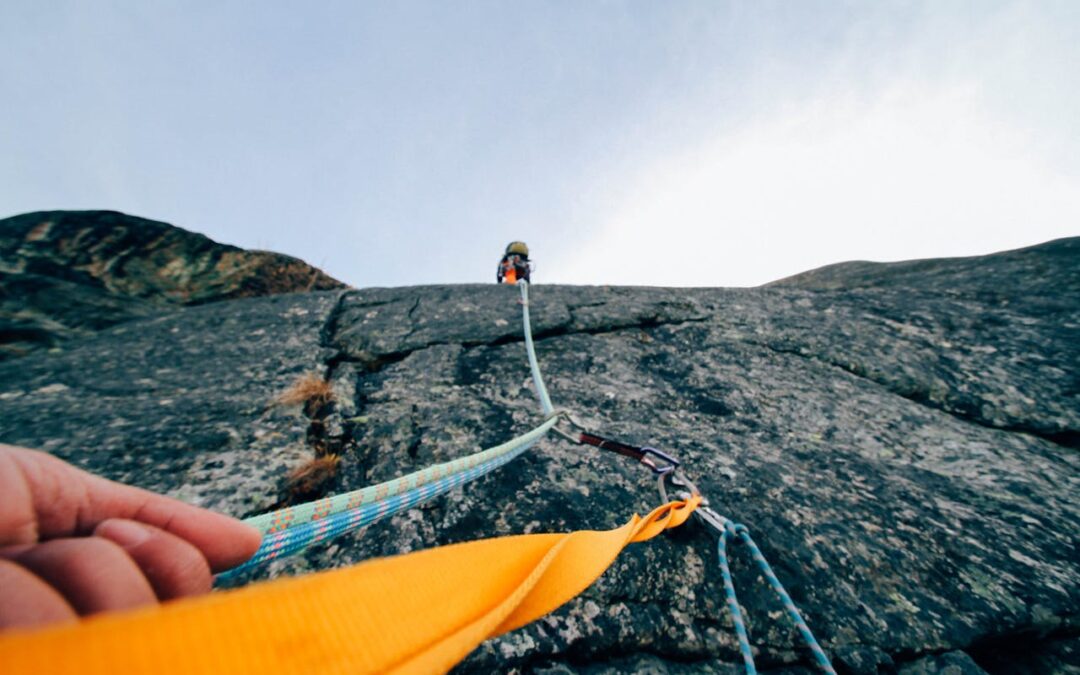If you’re looking to climb in the United States, you’d be hard-pressed to find a better place than Utah. From the sandstone spires in the state’s southeast to the limestone canyons in the north, the Beehive State offers great climbing practically everywhere within its borders.
To go along with the sheer number of climbing options, the state boasts great variety, with everything from multi-pitch routes to roadside bouldering. Convinced that you need to make Utah your next climbing destination? Here are six spots you need to check out.
Moab
One of the premier outdoor destinations in the United States, Moab has earned this reputation in part due to the wide diversity of rock climbing available there. Trad, sport, aid, bouldering—there’s something for climbers of all types and skill levels.
Moab’s signature feature may be its incredible sandstone spires, the country’s largest collection of legally climbable desert towers. Among the most iconic of these is Fisher Towers. The biggest freestanding tower in the United States, it’s home to challenging routes for serious aid climbers and moderate and advanced routes for trad climbers.
Elsewhere in Moab, Big Bend Boulders has 16 boulders within easy walking distance of the road. Meanwhile, sport climbers enjoy the moderately challenging Cinema crag, as well as the more challenging Portal.
Located in the desert of southeastern Utah, Moab can be climbed year-round, but the best conditions tend to be in the spring and fall. Ample free and paid camping options are available, and the small town has an impressive selection of shops and restaurants.
Salt Lake City
It’s hard beat the convenience of Salt Lake City. Thanks to the proximity of the Cottonwood Canyons, trad and sport routes are as little as 15 minutes away from the city’s downtown are. It is possible to fly into Salt Lake International and climb a crag within an hour of landing.
The Cottonwood Canyons consist of Big Cottonwood Canyon and Little Cottonwood Canyon, both of which are part of the Wasatch Mountains. Big Cottonwood Canyon is, unsurprisingly, the larger of the two, and offers a range of climbing, from roadside multi-pitch climbs to single-pitch bolted routes. Explore single-pitch climbing at the beginner-friendly Dogwood Crag, or test your skills at moderate multi-pitch routes further up the canyon.
The options in Little Cottonwood Canyon are no less numerous or diverse. Some climbers prefer Little Cottonwood thanks to its exceptional trad climbing and widely renowned bolted routes. Unlike at its bigger neighbor, there is also world-class bouldering in Little Cottonwood.
Concerned about what to do if bad weather spoils your outdoor climbing plans? Salt Lake City’s climbing gyms have a reputation for being world-class, too.
Zion National Park
The Mukuntuweap people considered the land that is now Zion National Park a sacred place. Today, climbers also revere it as a sandstone mecca.
Located in southwest Utah, Zion National Park has made its name for its famous multi-pitch trad routes. Buttress is one of the most well-known climbs in the world, and Moonlight Buttress is a challenging, eight- to 10-pitch route that may require aid climbing in sections.
Even if multi-pitch trad climbing is not your style, there are still many choices to be had. Single-pitch climbers can make their way to the Namaste Wall, home to several noteworthy routes. Elsewhere, there are options for the sport and bouldering crowd.
As is the case with all national parks, you’ll need to pay a fee to enter Zion. Shuttle busses run from the visitor center to the canyon, and the nearby town of Springdale has reasonably priced paid parking.
St. George
This under-the-radar outdoor destination is located along the route to Zion. Despite the fact that the town is overshadowed by its more famous neighbors, in-the-know climbers will tell you it’s well worth a stop.
Located in southwest Utah, St. George offers single-pitch climbs of various difficulties. There’s also challenging bouldering at Green Valley Gap, Moe’s Valley, and Pioneer Park. Climbers also have the option to access the nearby Virgin River Gorge, which is just over the border in Arizona.
The Bureau of Land Management (BLM) owns much of the land in this area of Utah. Fortunately for climbers, BLM land is free to camp on. Climbing conditions here are typically best in the fall and spring, but St. George is one of Utah’s only outdoor spots where you can also climb in winter.
Joe’s Valley
A scenic valley divided by a turquoise creek, Joe’s Valley is home to some of the best bouldering in the world. For this reason, climbers flock there each year for the Joe’s Valley Bouldering Fest.
Home to striking sandstone boulders that look as though they’ve been painted with varnish, this central Utah destination has hundreds of options for boulderers of all levels. The rest of the picturesque valley, meanwhile, offers all manner of outdoor activities set amid pine-covered peaks and verdant meadows.

